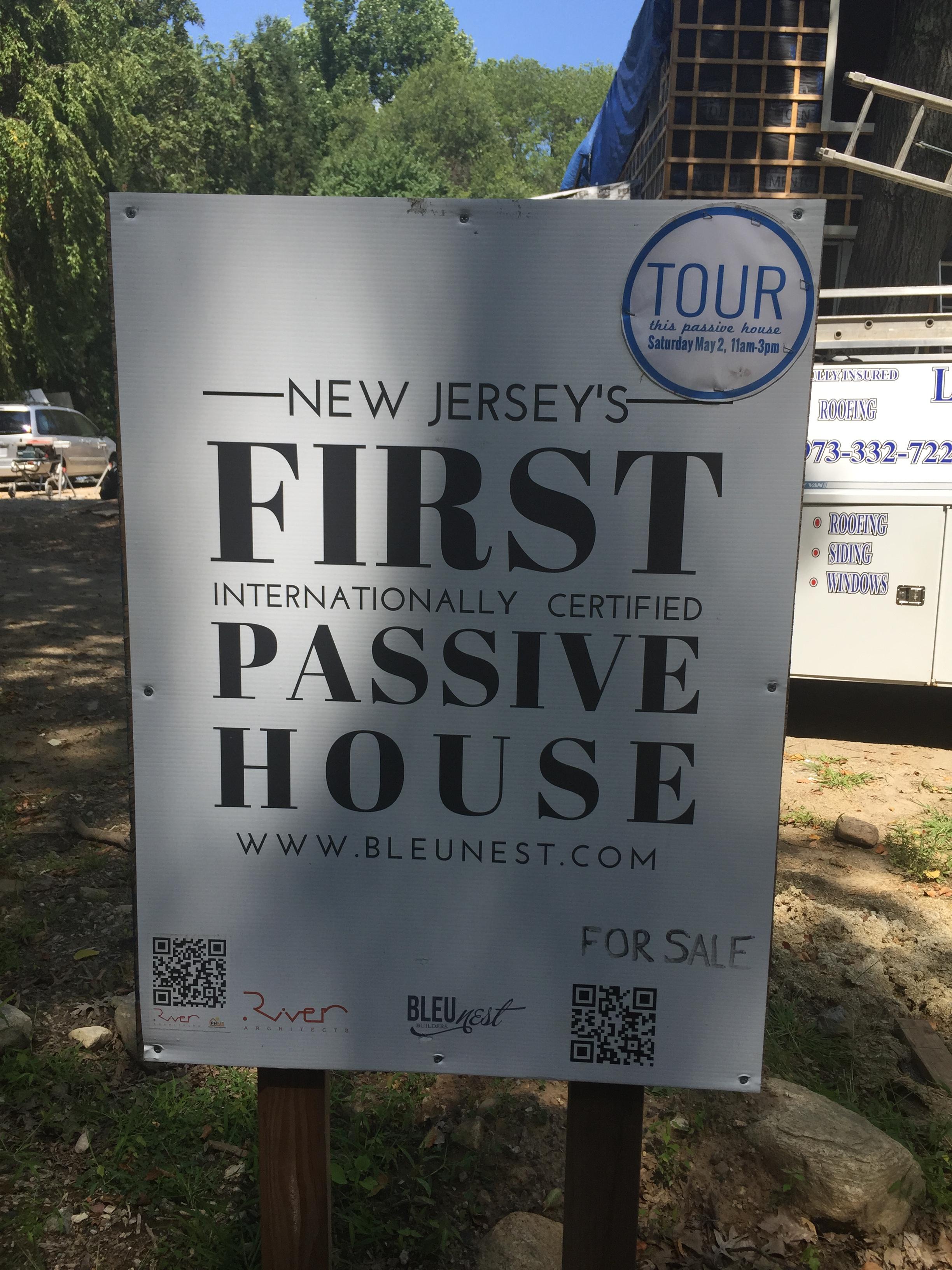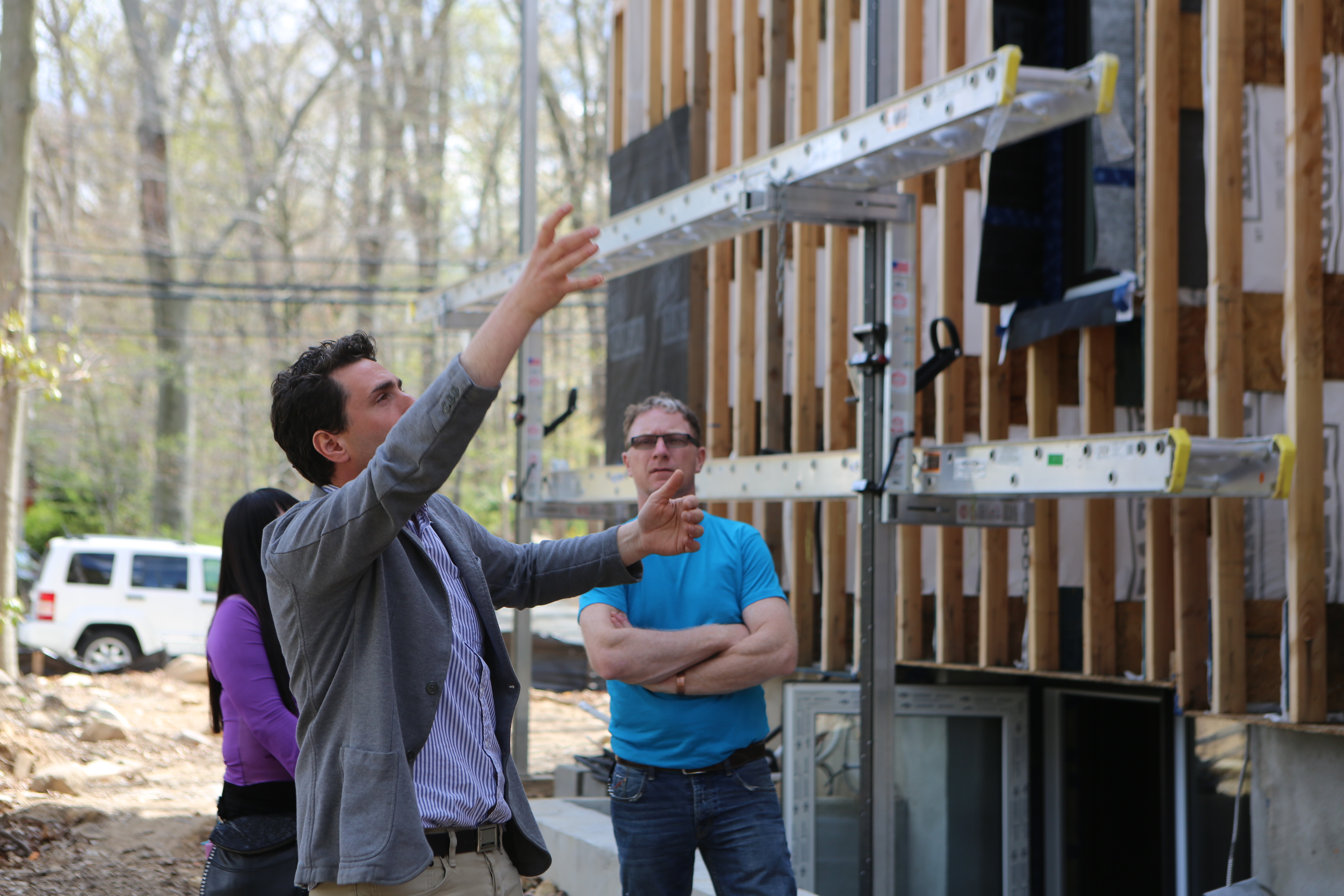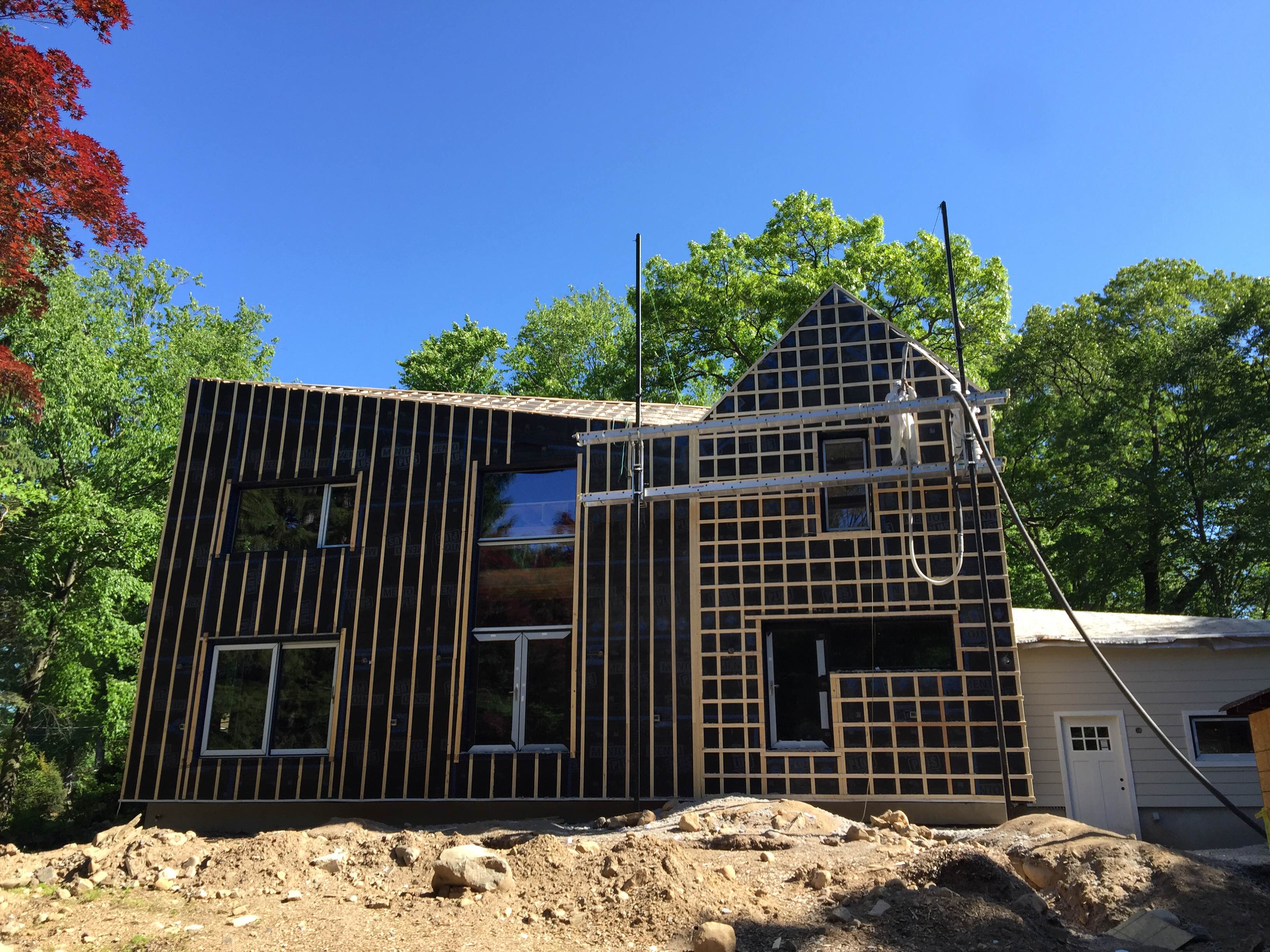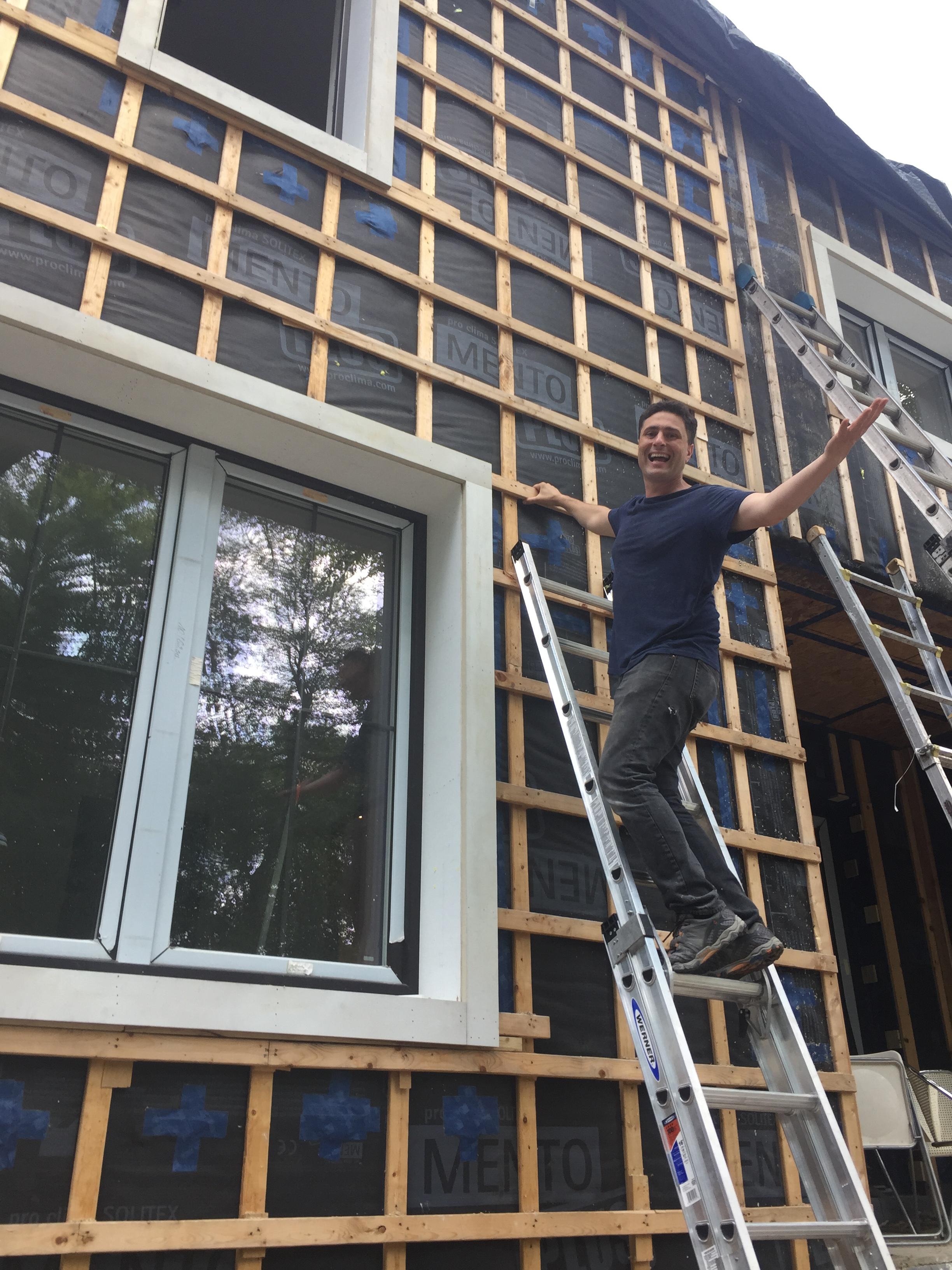The news about Cornell Tech on Roosevelt Island in New York City has been very exciting to those who follow Passive House trends. Handel Architects have designed the tallest Passive House building in the world. This high-rise dormitory building with its energy efficiency will change the way buildings are constructed though out the USA.
Closer to my neck of the woods in Ramsey, New Jersey is a smaller but still significant project of a Passive House being built by Darren Macri. Darren is a local builder specializing in Passive House technology and systems. We discussed a few things about the Passive House concepts and how Exterior Solar Shades are a part of the solution to energy efficiencies.
Q: Where did the concept of Passive Homes come from?
A: Going back thousands of years native people have known the benefits of the low winter sun and heating their south facing homes. The Sinagua people of Arizona would only build in caves that face south but had long over hangs to block the high summer sun – the first exterior shading device!!! Ideas of making our modern homes more efficient and more comfortable actually began in the 1970’s in North America. But when oil prices dropped in 1985 the efficient home movement in North America died. In Germany a physicist named Dr. Wolfgang Feist put together the best ideas that we left behind. He reworked those ideas to create one cohesive approach and then as Germans like to do – he put metrics to it and built a home energy modeling software. Now it was predictable and measurable. He wanted to find the sweet spot of where you can make the house more efficient enough to eliminate the large central HVAC units. Then you can take that saving and put it towards the windows and insulation. He built the first Passive House in Darmstadt Germany in 1999.
Q: How did you get started with Passive Homes?
A: I am a LEED AP and while there are some very nice things about LEED, I felt that it needed to be more aggressive in tackling the energy issues. While at a conference I discovered Passive House and I was like “hey beautiful where have you been all my life”
Q: Tell me about the project in Ramsey
A: We are building NJ’s very first certified Passive House. Our home will use up to 90% less heating and cooling energy than a standard constructed home – we can heat the house on the power of a hair dryer. While the energy savings are good the best part of a Passive House is the comfort. Nice evenly tempered rooms that stay rock steady no matter what is happening outside and perfect humidity – never to dry in the winter – which leads to super high indoor air quality.

Q: What is the future of the Passive House?
A: The future of Passive House is happening around us right now. It is exploding in a major way. NYC just announced the world tallest passive house to be built on Roosevelt Island. Since January of this year every new building in Brussels has to be built to the Passive House standard. There is a bill making its way through city hall that will mandate that all new municipal buildings be built to the on this standard. People and nations all over are realizing that Passive House doesn’t cost much more upfront, it more comfortable, more healthy and is great for the environment.
Q: How does Exterior Window Shades fit into the Passive House?
A: Exterior shading is essential for most Passive House projects. Ideally, most of your south facing wall would be 20% glazing. You want that low winter sun to heat up the house but you have to block that high summer sun and block it before it gets in – because if you don’t then your battle is lost and you will lead to over heating. For the west and east windows that short direct sun can really be complicated and also lead to over heating – exterior shading is the best way to combat that.


Darren Macri is a Passive House builder. His Company Bleu Nest is building New Jersey’s first Passive House in Ramsey, New Jersey. One of the key features of a Passive House is the insulation. In this house Darren is using Applegate cellulose insulation. This is post consumer newspaper treated with boric acid, which makes it insect resistant, mold resistant and fire resistant. Cellulose insulation is less expensive than most other insulation products and unlike most other insulation it provides a high r value while also providing air tightness. In the video Darren demonstrates the amazing insulation properties of the insulation while he melts a copper penny in his hand with a blow torch .
{{cta(‘7fc41619-393a-44f3-bfac-65f105d8a90e’)}}
